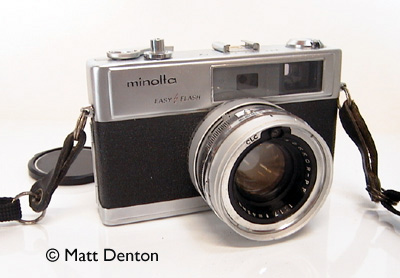
To as Digital Subject Programs), accessed via the Exposure Mode dial. Light reaching the viewfinder, making it harder to see the viewfinder image).Īs described above, the DiMAGE A2 also offers four preset scene modes (referred

Of the image sensor can be cranked up to give you enough light to determineįocus (on a traditional SLR camera, closing the aperture down reduces the available You confidence that your subjects are within the field of focus, and is actuallyĮven more useful on an EVF camera than on traditional SLRs, since the sensitivity This is a very welcome addition that gives The aperture stopped down, giving you an idea of the depth of field availableīefore actually capturing an image. See it.) A new function accessible via the Custom option of the Function dial,ĭOF Preview lets you view a scene through the electronic viewfinder or LCD with Once to open the shutter, then again to close it) on their new Z2 long-zoomĬonsumer camera, but not on the high-end A2, where you'd much more expect to Implemented a true "time" exposure option (press the shutter button Remote in Bulb mode, as the pressure of your finger on the shutter button isīound to jiggle the camera somewhat, blurring the image. (I strongly recommend use of the optional wired Time in Bulb mode is determined by how long you hold down the Shutter button, Speed and aperture, with a Bulb setting available for longer exposures.
Minolta camera flash manual#
Switching to Manual mode gives you control over both shutter In Shutter Priority mode, the user selects the shutter speed,įrom 1/4,000 to 30 seconds, while the camera chooses the best correspondingĪperture setting. On the zoom setting, while the camera selects the most appropriate corresponding

Mode lets you select the lens aperture setting, from f/2.8 to f/11 depending Shutter speed or greater depth of field as circumstances dictate. Thus, you can bias your exposure toward a faster

While in ProgramĪE mode, you can rotate either of the control dials to scroll between a range Program AE mode keeps the camera in charge of theĮxposure, while you have control over all other exposure options. In straight Auto mode, the camera controls everything about the exposure, exceptįor flash, zoom, and focus. Choices are Manual, Shutter Priority, Aperture Priority, ProgramĪE, Auto, Memory Recall, Portrait, Sports, Sunset, and Night Portrait modes. Within Record mode, the Exposure Mode dial selects the camera'sĮxposure mode. The Mode switch on the rear panel selects the basic operating mode: Record, Users of both Minolta's film cameras, and the much earlier Sony models.) While something ofĪ departure for the digicam market, this interface has proven very popular with That developed a significant "cult" following. Of the earlier Sony DSC-D700, DSC-D770, and DKC-FP3, three closely-related cameras (The combined use of functional dials, selection buttons, and the rotatingĬommand wheel is similar to the design of Minolta's film cameras, and very reminiscent Its myriad buttons, dials, and switches, I liked it a lot once I got the hang While I found the camera's user interface a little confusing at first, with

The DiMAGE A2 offers excellent exposure control, with very fine-grainedĪdjustment of such image attributes as sharpness, contrast, and color saturation.
Minolta camera flash free#
Learn about white balance and simple lighting techniques for dramatic shots in out free Photo Lessons area! > :Exposure & Flash Review First Posted: Konica Minolta DiMAGE A2 Konica Minolta updates their top-end electronic SLR with a higher resolution sensor, much-improved electronic viewfinder, a faster 3D autofocusing system, and high-speed USB 2.0 connectivity, among other improvements. Digital Camera Home > Digital Camera Reviews > Konica Minolta Digital Cameras > Konica Minolta DiMAGE A2


 0 kommentar(er)
0 kommentar(er)
